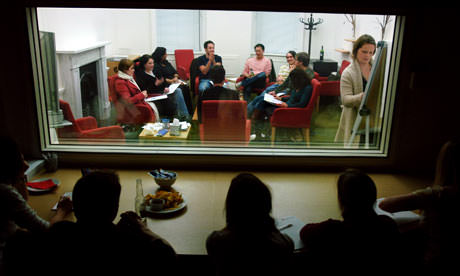Behind the looking-glass
To understand how mirror neurons help to interpret actions, we must delve into the networks in which these cells sit, say Antonio Damasio and Kaspar Meyer.
A remarkable discovery was made more than ten years ago: some neurons in the brains of macaques are active both when a monkey moves and when it sees a person move in a comparable way1. The lead researchers, Giacomo Rizzolatti and Vittorio Gallese, called the cells involved ‘mirror neurons’. This evocative name, and the significant implications of the finding, led to a surge of scientific and public interest in these cells. But perhaps the name was too evocative for the finding’s own good. It seems to have tempted people into thinking of these neurons as tiny, miraculous mirrors that allow us to understand each other, diverting attention from the search for how they work.


